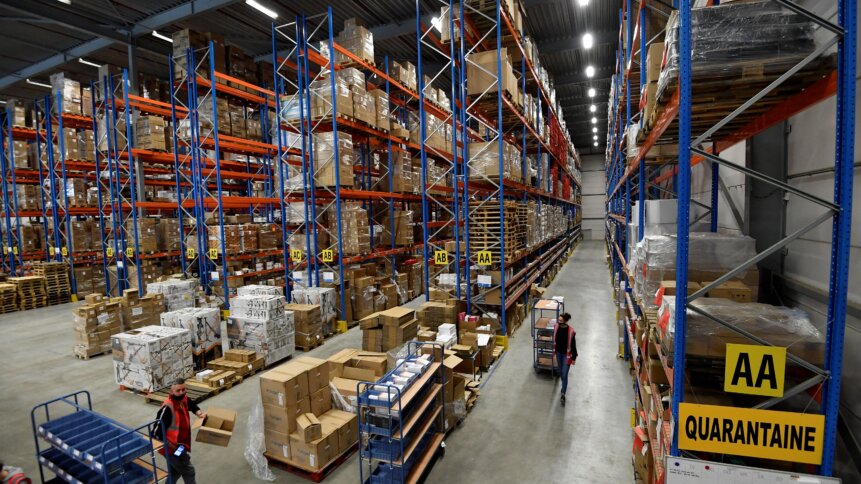COVID-19 brought needed change to the warehouse management system

- Demands amidst a global lockdown have forced decision-makers to reevaluate their warehouse management system and expedite how they modernize operations
- The threat of the virus has inevitably encouraged warehouse operators to increase levels of automation within their operations
Over the last 18 months, the pandemic shifted e-commerce distribution into a higher gear, while other retail channels slowed down drastically. That led to a profound disruption in what fulfillment experts were expecting out of the warehouse management system they employed to keep their logistics operations humming, even as global supply chains grappled to keep up with changing expectations.
The major driver causing the change to the way logistics operations and warehouse management is done today is the evolution of consumer behavior. An increased preference for online shopping, digital payments, and doorstep deliveries has contributed to skyrocketing e-commerce growth and further driven transformations in the way warehouses are managed and operated.
Efficient logistics became the utmost priority and the global crisis also underscored the urgent need for a shift towards digitization and automation, including in how warehousing systems could better improve efficiencies. Logistics players were left with little to no choice other than to ramp up infrastructure to meet soaring demand and adapt to changing consumer preferences.
But how has Covid-19 impacted operations to such a degree and how can warehousing systems help introduce more efficient logistical processes? For starters, the warehouse management system is a set of management processes that control warehouse operations – right from inventory management and control, to packaging and delivering to the right destination.
For logistics platforms, having a robust warehouse management system in place can solve pitfalls and offer numerous benefits including inventory control and transparency, effective synchronization between order placement and delivery, storage space optimization, inventory management, as well as creating effective inbound and outbound processes.
Automating your warehouse management system
The pandemic has undeniably accelerated warehouse automation to overcome the unprecedented challenges thrown in the way. With automation, a warehouse management system can establish the best floor plans, picking rules, and assist in maintaining synchronization between incoming orders and stored inventory.
The events of the last one and a half years have pointed out how crucial inventory management can be to expediting the delivery of essential items. Hence, a top-notch warehouse management system would ideally be able to optimize workflows and enhance productivity with automation to deliver best results.
That includes integrating cutting-edge technologies into logistics platforms incorporate to ensure greater efficiency. Some of these include voice-enabled order picking, real-time displays, and Radio Frequency Identification (RFID).
Structured inventory management
When the pandemic brought the world to a standstill, some organizations were left with excess inventory at their warehouses. Others were at a standstill as they waited to receive inventory at their depleted warehouse. The combination of supply chain nightmares coupled with unpredictable consumer behavior left warehouses in a bind.
As more consumers order online, they have come to rely on clear, accurate, timely inventory visibility. Now because of the need for speedier fulfillment, companies frequently choose to leverage third parties, such as third-party logistics (3PLs), decentralize their storage options, and use their retail locations for distribution too.
It has become essential to know exactly where inventory is in each location in order to ensure fast, accurate order fulfillment. Having the right technology to provide inventory visibility in real-time is crucial, including hardware and warehouse management software.
Smaller decentralized warehouse locations
To provide same-day or next-day delivery customers are expecting, manufacturers will seek to decentralize their warehouse locations. Being closer to the customer decreases transportation costs and reduces the risk of supply chain disruption if there is a delay/interruption in one part of the country, but not another.
While some manufacturers will look to establish these decentralized warehouse facilities in key locations, others might seek to utilize established 3PLs. Further, while new satellite distribution centers are established, warehouses will seek to use high-density automation to keep the warehouse footprint as small as possible, to limit the initial investment and ongoing required labor costs.










